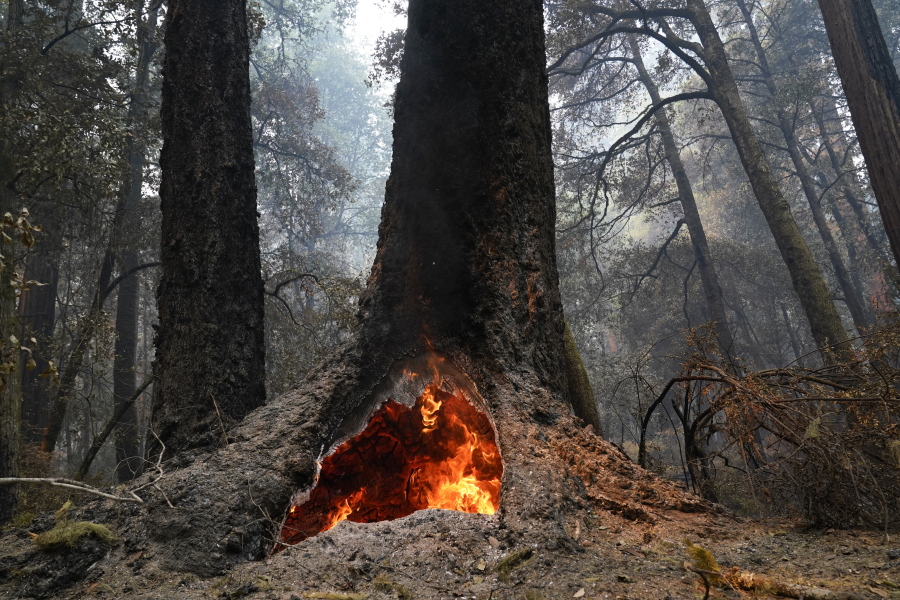BIG BASIN REDWOODS STATE PARK, Calif. — Eight months after a lightning siege ignited more than 650 wildfires in Northern California, the state’s oldest park — which was almost entirely ablaze — is doing what nature does best: recovering.
Big Basin Redwoods State Park is closed, but during a backcountry guided tour earlier this week, clusters of chartreuse shoots were budding on blackened redwood branches and trunks. Bright yellow bush poppies, white violets and star lilies dotted the scorched landscape. Hillsides of purple California lilac shrubs were fixing nitrogen in the soil. And new Knobcone pine trees, which need temperatures above 350 degrees to pop open their cones and drop their seeds, were sprouting.
“I think nature is finding a way,” State Parks senior environmental scientist Joanne Kerbavaz said.
Scientists, parks advocates and conservations say the resiliency of Big Basin Redwoods State Park is cause for hope well beyond the Santa Cruz mountains. In California, COVID-19 infections and deaths have dropped rapidly as a widespread vaccine rollout appears to be turning the corner. And in the burned communities that lost homes in last year’s fires, construction vehicles crowd narrow roads to lay new foundations.



